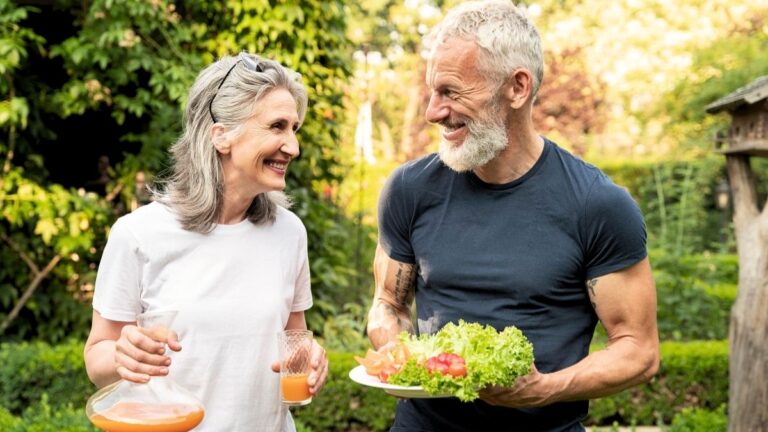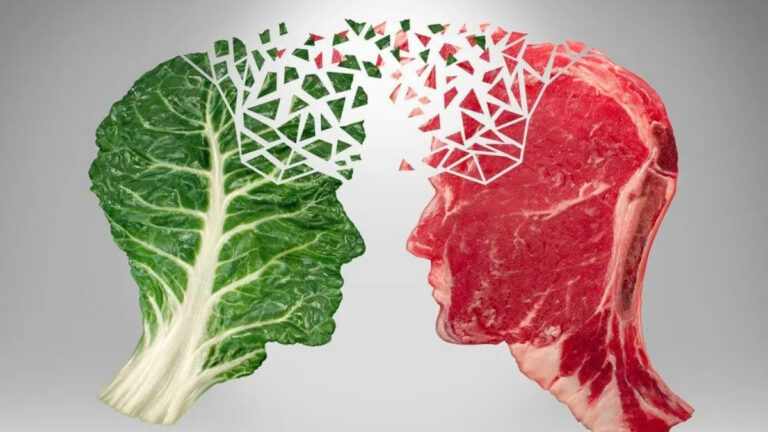The Longevity “Paradox”: Why Eating More of This 1 Food Could Add Years to Your Life

The desire for a long, healthy life is universal, but modern health narratives are rife with confusion. A central conflict exists where popular diet plans warn that common foods like beans and lentils are packed with “anti-nutrients” and “lectins,” which supposedly cause inflammation and weight gain.
This concept, popularized as “The Plant Paradox,” has created widespread fear and confusion. The true paradox, however, is that the world’s longest-lived populations—those residing in the “Blue Zones”—do not avoid these foods; they consume them every single day.

This report solves the Longevity Paradox. It identifies the #1 food for longevity by examining data from the Blue Zones, presents new scientific evidence from 2025 that confirms its benefits, and uses expert analysis to decisively debunk the lectin myth.
The #1 Food for a Longer Life: A Blue Zones Secret

The “Blue Zones” are five demographically confirmed, geographically defined areas with the highest percentage of centenarians, or people who live to be 100. These regions are Okinawa, Japan; Sardinia, Italy; Nicoya, Costa Rica; Ikaria, Greece; and Loma Linda, California.
Dan Buettner, the National Geographic Fellow who identified and studied these populations, distilled their common lifestyle and dietary denominators into nine principles, the “Power 9”. His primary finding, regarding diet, is that the “cornerstone” of every single Blue Zones diet is beans (legumes).
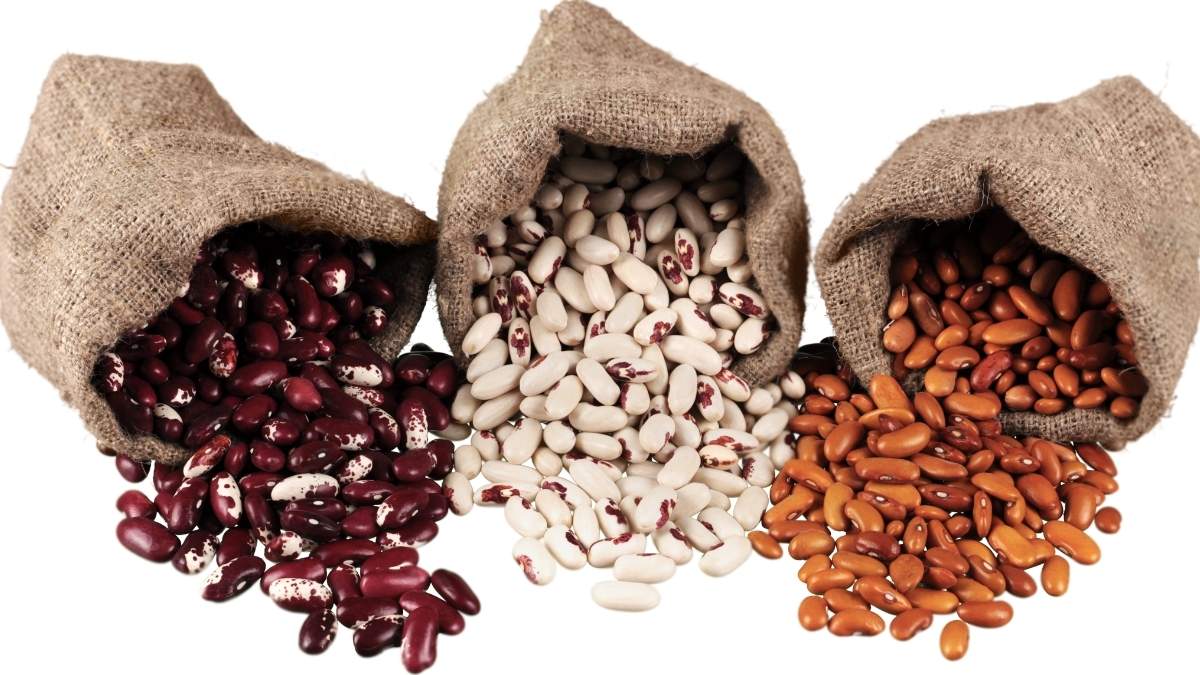
Buettner’s research revealed a striking statistic: the consumption of one cup of cooked beans daily is linked to an estimated four extra years of life expectancy. This pattern is not isolated to one type of bean but is a consistent theme of legume consumption across all five zones:
- Nicoya: Black beans
- Mediterranean (Ikaria & Sardinia): Lentils, garbanzo, fava, and white beans
- Okinawa: Soybeans (in the form of tofu and miso)
The official Blue Zones food guidelines describe beans as a “consummate superfood,” averaging 21% protein, 77% complex carbohydrates, and high amounts of fiber. Their hearty and satisfying nature is believed to play a crucial role in displacing less healthy foods, particularly animal meat, from the diet.

This dietary substitution is stark. Data shows that “people in the Blue Zones eat at least four times as many beans as Americans on average”. Conversely, meat is eaten sparingly, “about two ounces or less about five times per month”. This suggests the longevity benefit comes not just from adding beans, but from replacing meat with them.
The 2025 Proof: What New Science Says About Legumes
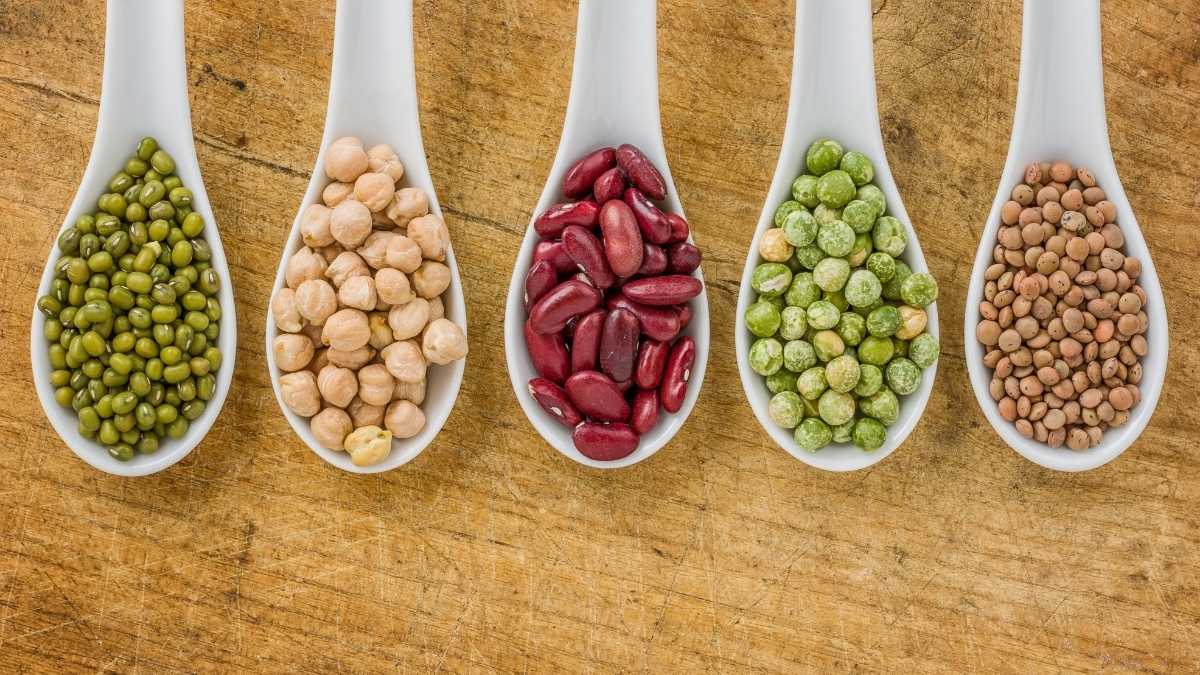
The observational data from the Blue Zones is compelling, but recent clinical data for 2025 provides concrete, experimental proof. The modern longevity goal has shifted from just lifespan to healthspan—the period of life lived free from chronic disease. New research confirms the central role of legumes in achieving this.
New 2025 Study: Swap Meat for Beans to Lose Weight and Lower Cholesterol

A 2025 randomized controlled trial published in Food & Nutrition Research provides a direct comparison of a diet high in red and processed meat versus one that partially substitutes meat with non-soy legumes. In the six-week study, healthy working-age men were split into two groups.
The results were significant. By the end of the trial, the “LEGUME” group had statistically significant lower levels of:

- Total Cholesterol
- LDL (“Bad”) Cholesterol
- BMI and overall Body Weight. The legume group experienced an average weight loss of 1.0 kg (2.2 lbs), while the meat group saw no significant change.
A nutritional analysis revealed why these changes occurred. The legume-substitution diet was qualitatively superior, resulting in significantly higher intakes of fiber and healthy polyunsaturated fats (PUFAs) and a significantly lower intake of inflammatory saturated fats (SFAs).

This 2025 study provides a clear prescription: replacing red meat with beans is a clinically-proven strategy for improving cardiovascular risk markers and managing weight.
🥩 vs 🫘 Scientific Comparison
Red Meat vs Legume Substitution Study Results
Stay Active and Age Healthier
The new scientific benchmark for healthy aging is to reach 70 or 75 years of age free of major chronic diseases. A 30-year longitudinal study from the Nurses’ Health Study and Health Professionals Follow-Up Study.
Published in 2024, found that higher adherence to dietary patterns rich in plant-based foods—explicitly including legumes—was linked to greater odds of achieving healthy aging.

A key 2025 insight relates to “locomotion”—the ability to maintain physical movement and muscle function with age. Emerging research, published in J Nutr Health Aging, indicates that the protein source, not just the total amount, plays a critical role.
Diets like the Mediterranean diet, which award points for legume consumption while subtracting them for red meat, are associated with better locomotion and physical function in older adults.
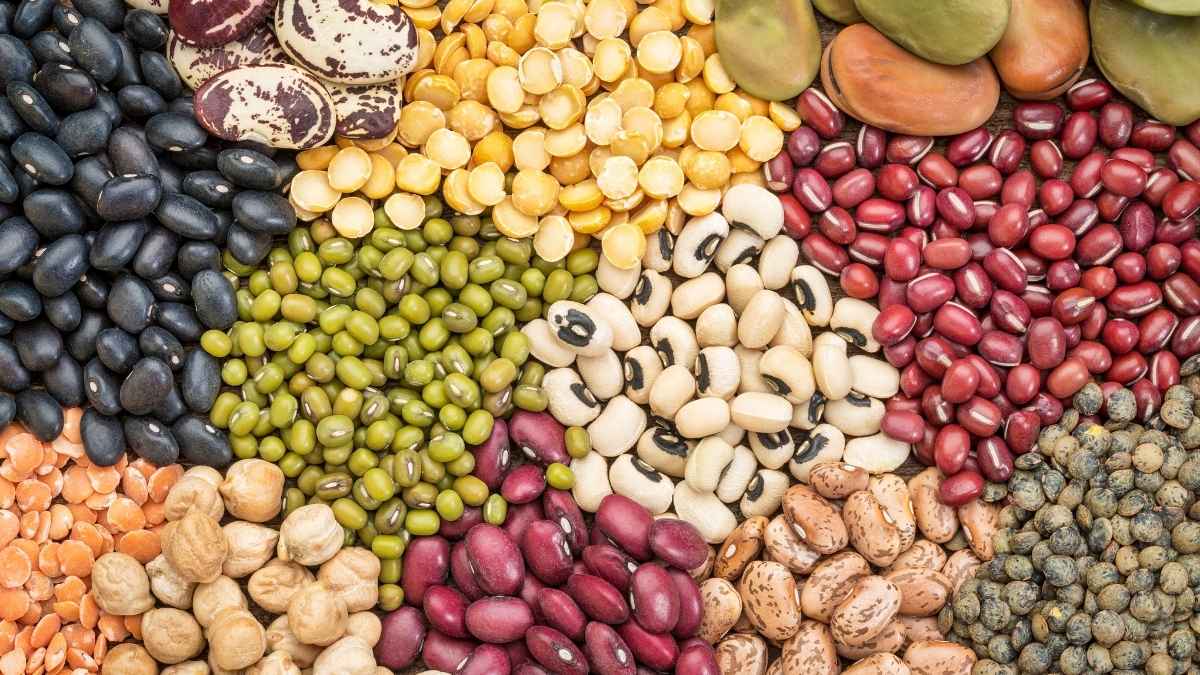
This evidence is supported by leading longevity experts. Dr. Valter Longo, Director of the USC Longevity Institute, recommends in his “Longevity Diet” that adults consume “beans, chickpeas, green peas, and other legumes as your main source of protein“.
Myth vs. Fact: What the Experts at Harvard and Mayo Clinic Say
The scientific and medical consensus is unified in debunking the fear of cooked legumes.

- Fact 1: Cooking Neutralizes Lectins. The anti-lectin argument collapses under this fact. Harvard’s T.H. Chan School of Public Health states that cooking, soaking, or boiling legumes “completely eliminates lectin activity”. The proteins are broken down by heat, rendering them harmless.
- Fact 2: Canned Beans Are Safe. For modern convenience, canned beans are an excellent and safe option. They are “soaked and boiled appropriately” during the canning process, which effectively neutralizes all active lectins.
- Fact 3: The Expert Consensus Debunks the Myth. The medical and nutritional establishment has repeatedly refuted the anti-lectin diet.
- Mayo Clinic: States clearly that “No scientific evidence exists to show that eliminating dietary lectins will cure any medical disorders…” and that the established health benefits of these foods “outweigh any perceived benefits from avoiding” them.
- Cleveland Clinic: A registered dietitian, in a 2024 analysis, noted there is “little hard evidence supporting the notion that lectins are toxic or harmful… especially when cooked”.
- NutritionFacts.org: The evidence-based platform directly counters the fad in an article titled “Dr. Gundry’s The Plant Paradox Is Wrong”.
Your 2025 Action Plan: 3 Simple Ways to Eat More Legumes
Despite the evidence, practical barriers to legume consumption remain, including concerns about digestive discomfort, preparation time, and taste. An effective 2025 action plan must address these three points.

First, regarding digestive concerns, the human gut microbiome adapts. A study published in the BMC Medical Journal found that participants who ate beans daily for three weeks reported less intestinal gas and discomfort by the end of the study. The key for new consumers is to start with small servings (e.g., 1-2 tablespoons) and slowly increase the amount.
Hack #1: The 2025 “Lazy Prep” Method
Traditional “big batch Sunday” meal prep often leads to “fridge fatigue” and monotony. A more flexible 2025 approach is “component cooking.” This involves cooking one or two “chameleon” bases, such as a large pot of lentils or black beans with neutral seasoning (salt, pepper, garlic).

This base is then stored and combined with a “flavor shelf” of accelerators—like jarred salsa, dressings, or curry paste—to create different meals in minutes:
- Day 1: Bean base + Rice + Salsa = Burrito Bowl.
- Day 2: Bean base + Broth + Frozen Veggies = 10-Minute Soup.
- Day 3: Bean base + Vinaigrette + Chopped Veggies = Dense Salad.
Hack #2: The 55-Million-View TikTok “Dense Bean Salad”
A recent viral food trend, the “Dense Bean Salad” (DBS) from TikTok creator Violet Witchel (@violet.cooks), offers a modern solution to meal prep. The trend, which has amassed over 55 million views, is based on a key insight: it is a “veggie-packed, protein-heavy, dense salad that just marinates in the fridge and gets better throughout the week“.
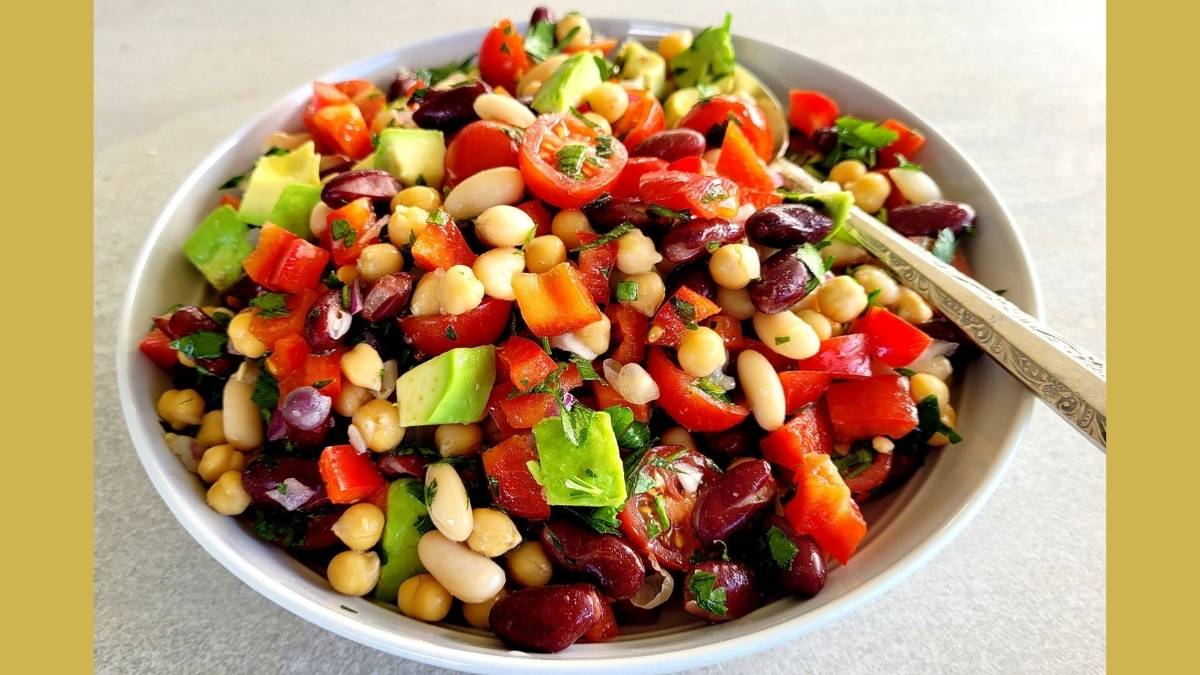
Unlike lettuce-based salads, this meal-prep item does not get soggy. An actionable tip from the trend is to use “crunchy” vegetables like Persian cucumbers, which hold up well, and to add soft ingredients like avocado only when serving, not during preparation.
Hack #3: 3 “Gateway” Recipes Using Canned Beans
Canned beans, which are fully cooked and lectin-free , are the fastest way to implement this dietary change.
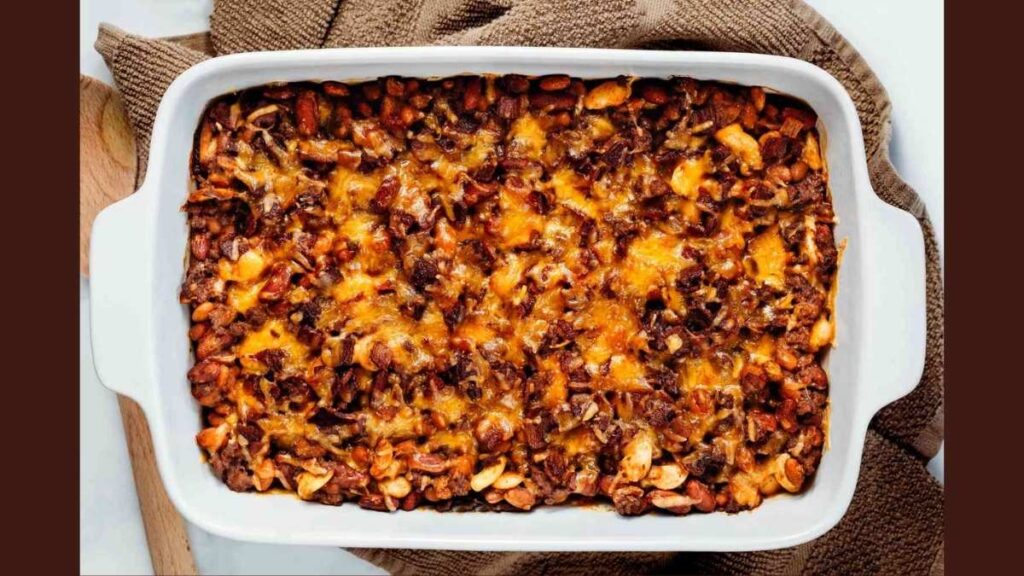
- 5-Minute “Power Lunch”: A “Creamy Avocado & White Bean Wrap” or a 10-Minute Bean Salad requires only rinsing a can of beans and combining it with chopped vegetables and a simple dressing.
- Healthy “Comfort Food”: An “Easy Bean Bake” or “Baked Cheesy White Bean Tomato Skillet” involves combining canned beans, canned tomatoes, and spices in an oven-safe dish and baking until warm.
- Surprising “Healthy Swap”: Legumes can be used to replace less healthy ingredients. “White Bean Alfredo Sauce” uses blended white beans to create a creamy, high-fiber, high-protein base for pasta. “Black Bean Brownies” use bean puree to add fudginess, fiber, and protein to a dessert.
Bonus: The 1-Hour “Fast Soak” for Dried Beans
For those who prefer to use dried beans, which offer more variety and lower cost , an overnight soak is not necessary. The “Fast Soak” method is a time-efficient alternative:
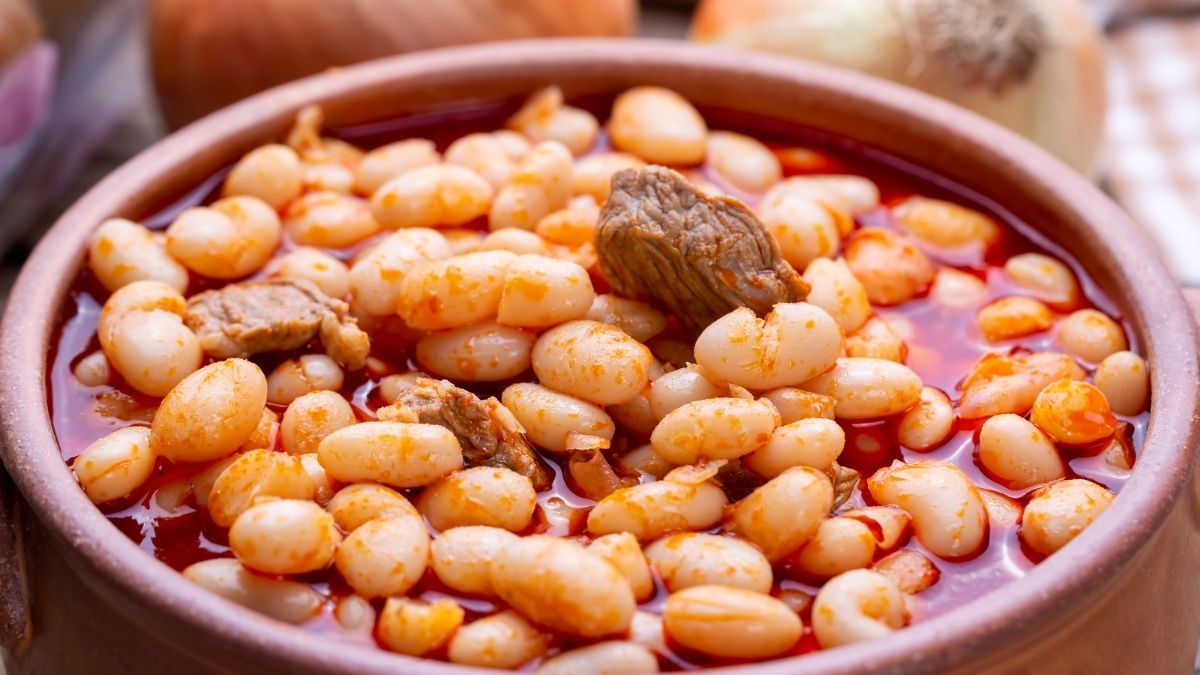
- Place dried beans in a large pot and cover with water.
- Bring to a boil and boil for 1 minute.
- Turn off the heat, cover the pot, and let the beans sit for 1 hour.
- After an hour, drain, rinse, and the beans are ready to be cooked in fresh water.
At the Last,
The “Longevity Paradox” is not a paradox of food, but one of information. Popular health fads created a persistent “lectin myth” that is not supported by scientific evidence. In contrast, real-world, long-term observational data from the world’s Blue Zones and the latest 2025 clinical science are in complete alignment: legumes are a cornerstone of a long, healthy life.

The data suggests that the single most impactful, evidence-based, and cost-effective dietary change one can make in 2025 is to eat more beans. A simple starting point is to try a “Dense Bean Salad” or swap one red meat meal for an “Easy Bean Bake”. Solving the Longevity Paradox can be as simple as incorporating a daily serving of legumes.

